A temperature guide to the cook-chill process
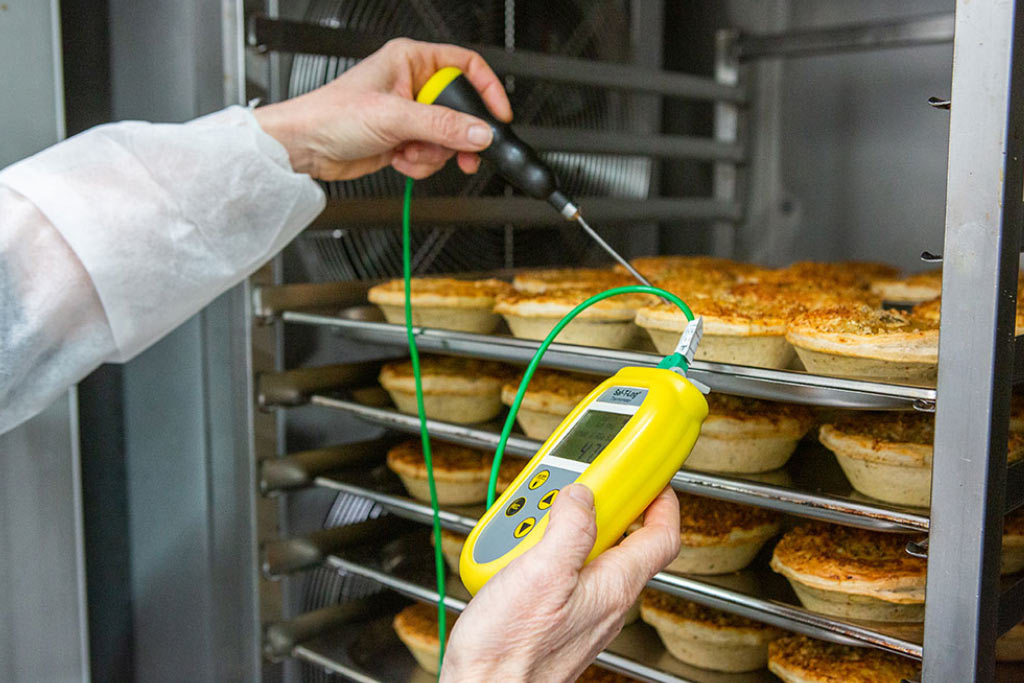
A key step in food preparation for many businesses, we investigated the importance of the cook-chill process on food safety, quality and business efficiency.
What is the cook-chill process?
The cook-chill process is a method of pre-preparing large quantities of cooked food. The food must first be heated to a safe cooked temperature, before rapidly cooling or freezing to a safe storage temperature. By passing through the danger zone quickly, bacteria is not given the opportunity to develop and multiply. As well as food safety, there are a number of other benefits to using this process.
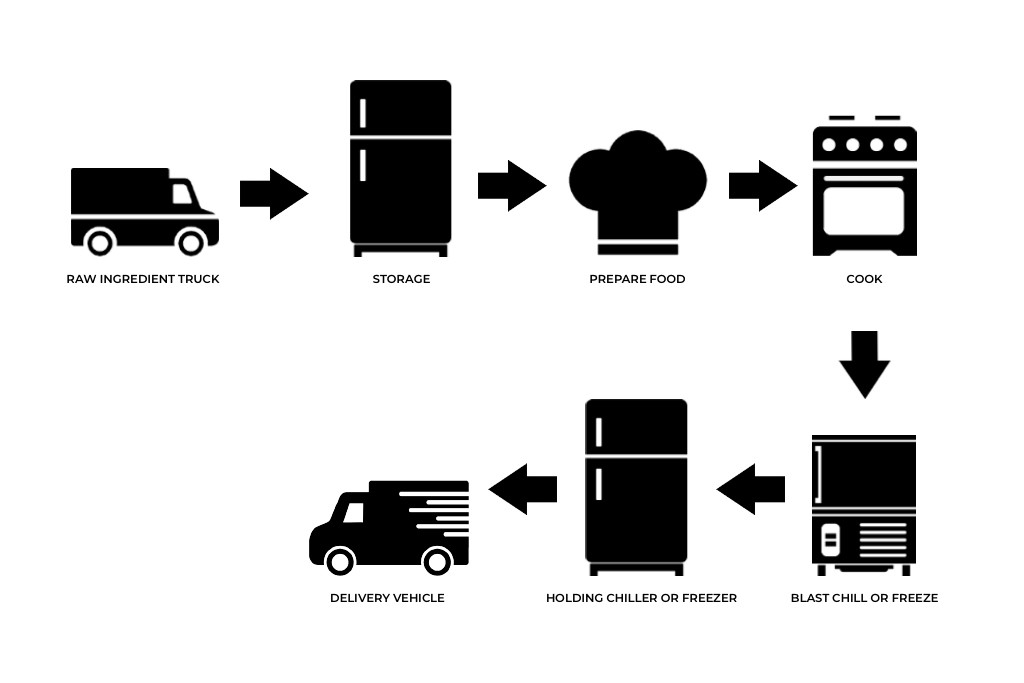
Why use the cook-chill process?
Saves time
Food is much quicker to prepare in large batches. For busy restaurants, it’s also ideal for preparing food ahead of peak times to enable faster service.
Increases consistency and quality
By cooking food in large batches, businesses can be confident that the food is uniform in taste, quality, and safety. This is particularly useful for manufacturers and chain restaurants, as this will ensure consistency across products and outlets.
When food is stored in a domestic freezer, the water held inside forms large ice crystals. The rapid freezing process promoted by blast chillers results in much smaller crystals, which can have a dramatic effect on the food once thawed. Larger crystals will rupture the cells of the food as they melt, negatively altering the flavour and texture of the item. Therefore blast chilling preserves the taste and texture of the food.
Reduces the risk of harmful bacteria
Bacteria develops in warm, moist environments, multiplying over time. Therefore, the more quickly hot food is cooled, the less harmful bacteria is able to grow.
Extends shelf life
By reducing the period of time when food temperature naturally accelerates the rate at which harmful bacteria grows, chefs and producers are able to extend the shelf life of food
products. This can significantly improve sales and availability, whilst reducing food waste.
What industries use the cook-chill process?
Food processing
The cook-chill process is used by food manufactures to mass produce large batches of products to supply to supermarkets and other vendors. This includes products such as ready meals, cooked meat and other chilled products that have been pre-cooked.
Restaurants
Restaurants, particularly chain restaurants, will pre-cook and chill elements of their dishes in order to save time ahead of service and ensure consistency across outlets. This often includes meat, rice and sauces.
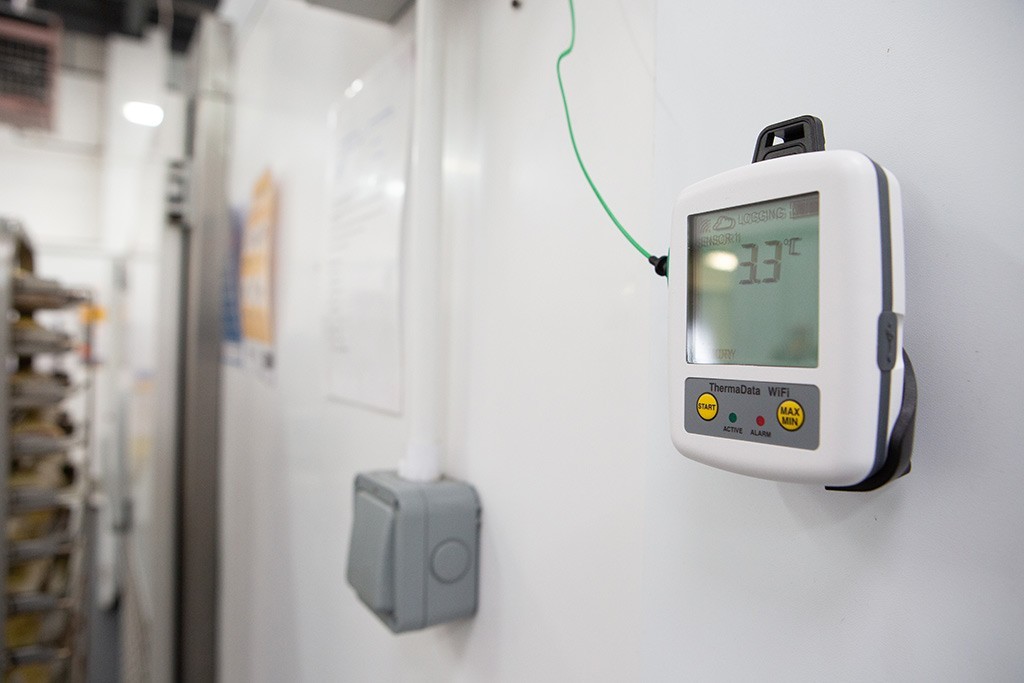
What are the key temperatures?
Microorganisms that cause illness and food spoilage can grow between temperatures of 8°C and 63°C. This is also known as the danger zone. Keeping food out of the danger zone will reduce the risk of food poisoning. Rapidly cooling hot food using the cook-chill process therefore minimises the potential of harmful bacteria growing.
Ideally, hot food should be cooled to less than 8 °C within 90 minutes.
As well as warmth, several other factors encourage the growth of harmful bacteria:
Moisture
Foods with high moisture content, such as chicken, are more at risk of bacterial growth. This is because bacteria needs moisture to grow.
Food
Some foods are more high risk than others. High protein foods such as meat and dairy promote bacterial growth by supplying nutrients to the bacteria.
Time
Bacteria will multiply by dividing into two (also known as binary fission) more rapidly within the optimum conditions for growth. As a result, bacteria can multiply to millions within a short period if not cooled and stored correctly.
Suitable pH
Most bacteria reproduce best at a neutral pH level of 7. Acidic foods with a pH below 7, or alkaline foods with a pH above 7, may stop or slow down the rate of bacterial growth.
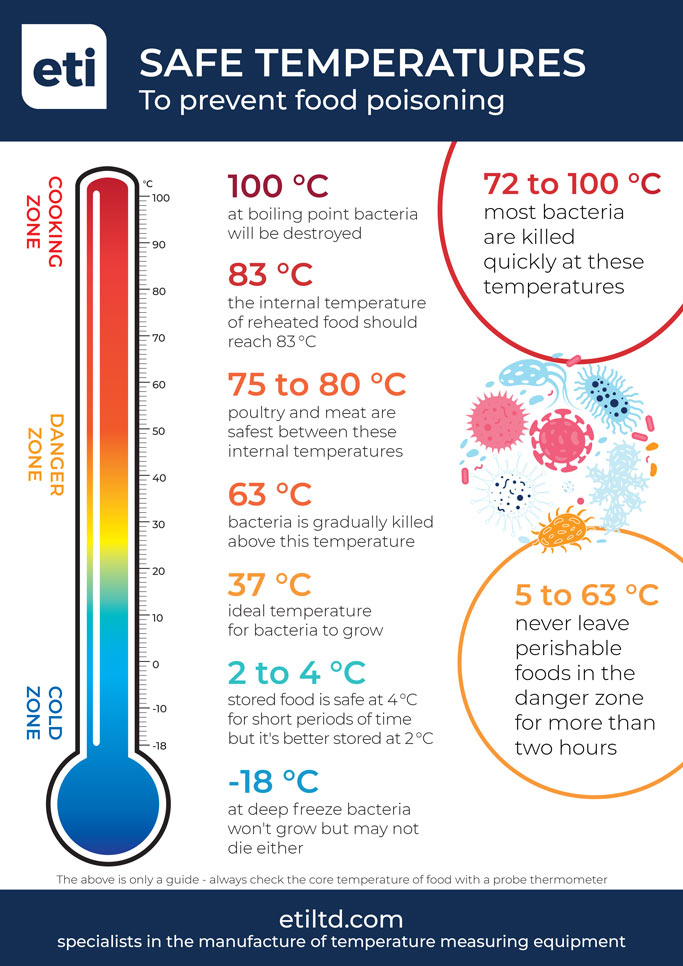
How does the cook-chill process work?
Food must be cooled as quickly as possible and placed into a refrigerator or freezer as soon as it is safe to do so. Businesses can speed up the process by portioning up the food into smaller containers, ensuring containers are cold before use and using shallow ice baths.
Many businesses and food manufacturing sites will use blast chillers or freezers, as this is the quickest and safest method of cooling. This makes consistently producing safe food much easier and more reliable.
How to ensure safe temperatures are met within the necessary time frame?
Whether using blast chillers or traditional methods of cooling, businesses will need to keep records of their cooling temperatures as part of their Hazard Analysis and Critical Control Point (HACCP) plans, to ensure that food is consistently meeting safety guidelines.
The best way to monitor these temperatures is automatically, using data loggers. Loggers can be set in place and will automatically record temperatures at timed intervals. The data can then be transferred to a device and viewed as a list or graph, making it simple to map the temperature journey of the food throughout the cooling process. Having fully trackable, paperless data increases traceability, making it more reliable and accessible for EHO visits.
Not only this, a short term investment in data loggers can also save businesses money in the long term. We calculated that taking five temperature checks three times daily, 365 days a year, will amount to around 73 hours of annual labour. Based on an employee who is earning the UK minimum wage for over 25s of £8.91, this will cost £641.52 in wages.
We conducted an experiment using data loggers to see the difference between cooling two gammon joints, one at room temperature and the other at blast chiller temperature. As you can see from the graph below, the temperature of the blast chiller gammon dropped significantly faster than that of the room temperature gammon. The room temperature gammon didn’t come close to a safe temperature of 8°C, instead plateauing at a dangerous temperature of 30-40°C for over an hour where the conditions for bacterial growth were optimal.
Not only does the graph show the importance of cooling food using proper practices, it shows how using a data logger to map the temperature and time verifies the entire process, giving complete security over the safety and quality of the food.
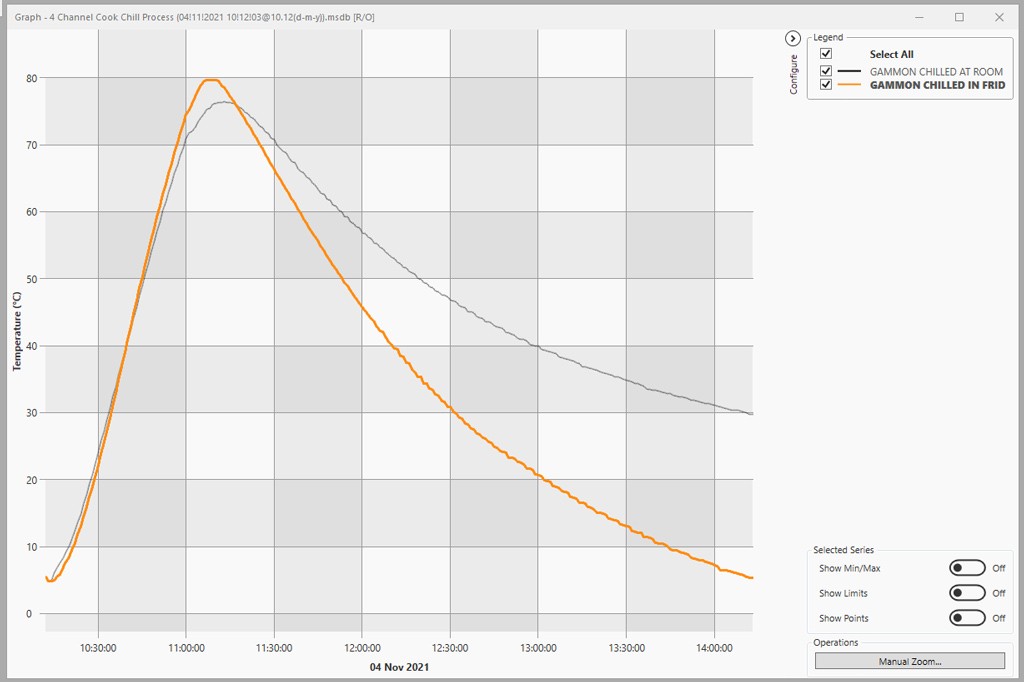
Best thermometers for monitoring the cook-chill process
Stainless Steel ThermaData Pro Logger
A wide temperature range and durable stainless steel casing make the Stainless Steel ThermaData Pro Loggers ideal for harsh food processing applications such as blast chilling or freezing. With six probe options available, this logger is perfect for tracking temperatures automatically and viewing and storing data digitally.
2 Channel Type K ThermaData WiFi Logger
WiFi loggers are perfect for having complete control over temperature monitoring. Users can view live data on their devices worldwide, and receive instant email alerts for out-of-range temperatures. Our versatile TD2TC model is compatible with a wide range of type K thermocouple probes, perfect for monitoring internal food temperatures, air storage temperatures and any other HACCP requirements.

Piglet’s Pantry on ETI thermometers for blast chilling
We solved Piglet’s Pantry HACCP requirements with a paperless temperature monitoring system. Jo Hunter, who founded the award winning pie makers in 2011, spoke to us about how ETI thermometers help to confirm their pies have been cooled to a safe temperature before refrigerating.
“The cook-chill process is integral to our production at Piglet’s Pantry, it enables us to consistently produce high-quality products whilst knowing they have been cooled safely. We use ETI thermometers across our whole production line, including our blast chillers. They give us complete peace of mind that we’re adhering to food safety guidelines, whilst allowing completion of our HACCP checks so much simpler to carry out. This frees time for us to spend on food quality and other areas of the business.”
Read our interview with Piglet’s Pantry to learn more about their business and ETI thermometer system.
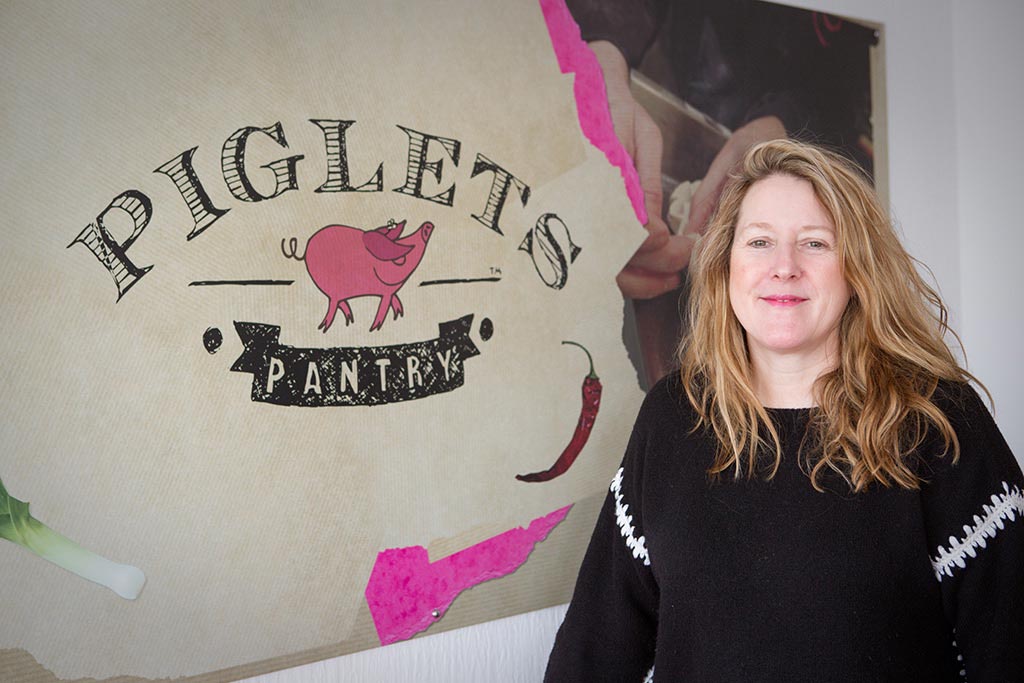
YOU MIGHT ALSO LIKE:
HACCP Checks: Save Over £600 a Year With This Easy Step
How to Select the Right Temperature Data Logger
5 Essential Temperature Solutions For Your HACCP Plan